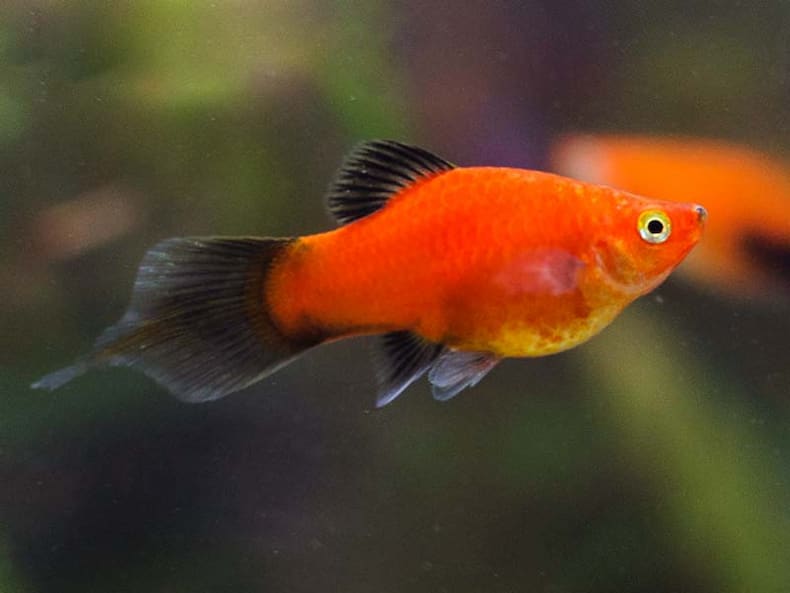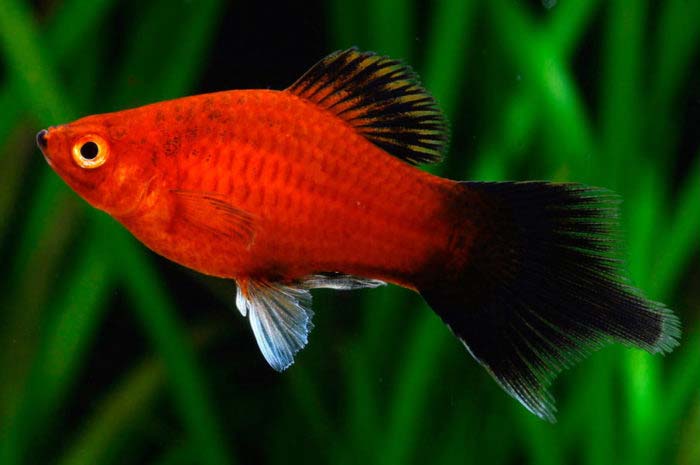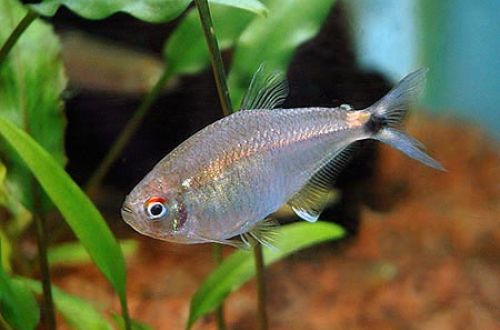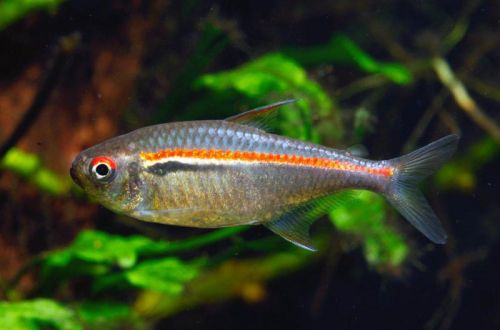
Pecilla radish
Pecilia radish, English trade name Platy Pintail. It is a breeding variety of the usual Pecilia, does not occur in nature. The fish is distinguished by the unusual structure of the caudal fin, which has elongated rays in the center, resembling a small brush. This is an inherited trait, so it can appear in hybrid offspring obtained from crossing with other varieties of Paecilia. Thus, fish of the most diverse colors are supplied under one name.

Historically, the red form with black fins was the most common in the countries of the former USSR. Apparently, it is with her that the analogy with the radish vegetable crop is connected – red color and a long tail. Other countries have a different view. To the inhabitants of Europe, the tail fin resembled a pin, so the name Platy Pintail arose, where pin is “pin”, “pin”, and tail is “fin”.
Brief information:
- The volume of the aquarium – from 60 liters.
- Temperature – 20-28°C
- Value pH — 7.0–8.2
- Water hardness – medium to high hardness (10-30 GH)
- Substrate type – any
- Lighting – moderate or bright
- Brackish water – acceptable at a concentration of 5-10 grams per liter of water
- Water movement – light or moderate
- The size of the fish is 5-7 cm (without a brush on the tail).
- Food – any food
- Temperament – peaceful
- Content alone, in pairs or in a group
Maintenance and care

As a rule, the closer the fish are to their wild relatives, the more hardy they are. Accordingly, artificially bred decorative varieties sometimes place increased demands on their care. Fortunately, Pecilia radish is not one of them. She is able to adapt to various conditions, including life in a half-empty aquarium, but the latter is not welcome.
A favorable environment for long-term keeping is a spacious tank, warm slightly alkaline water, shelter in the form of thickets of plants, access to quality food and peaceful neighbors of a comparable size.
Maintaining stable water conditions depends on the smooth operation of the installed equipment and the regular maintenance of the aquarium. The minimum mandatory set of procedures includes replacing part of the water with fresh water and removing organic waste (feed residues, excrement).

Food. Will accept most popular foods in the aquarium hobby. An important condition is that the products must contain herbal supplements, otherwise the fish may begin to damage the delicate parts of the plants.
Breeding / reproduction. Ease of breeding is characteristic of almost all viviparous species, and Pecilia is no exception. In the right environment, they produce a new generation almost every month. The fry appear fully formed. To avoid predation by adult fish, juveniles are transplanted into a separate tank. It is worth remembering that fish are able to interbreed not only with other varieties, but also with closely related species, for example, the Swordfish.





